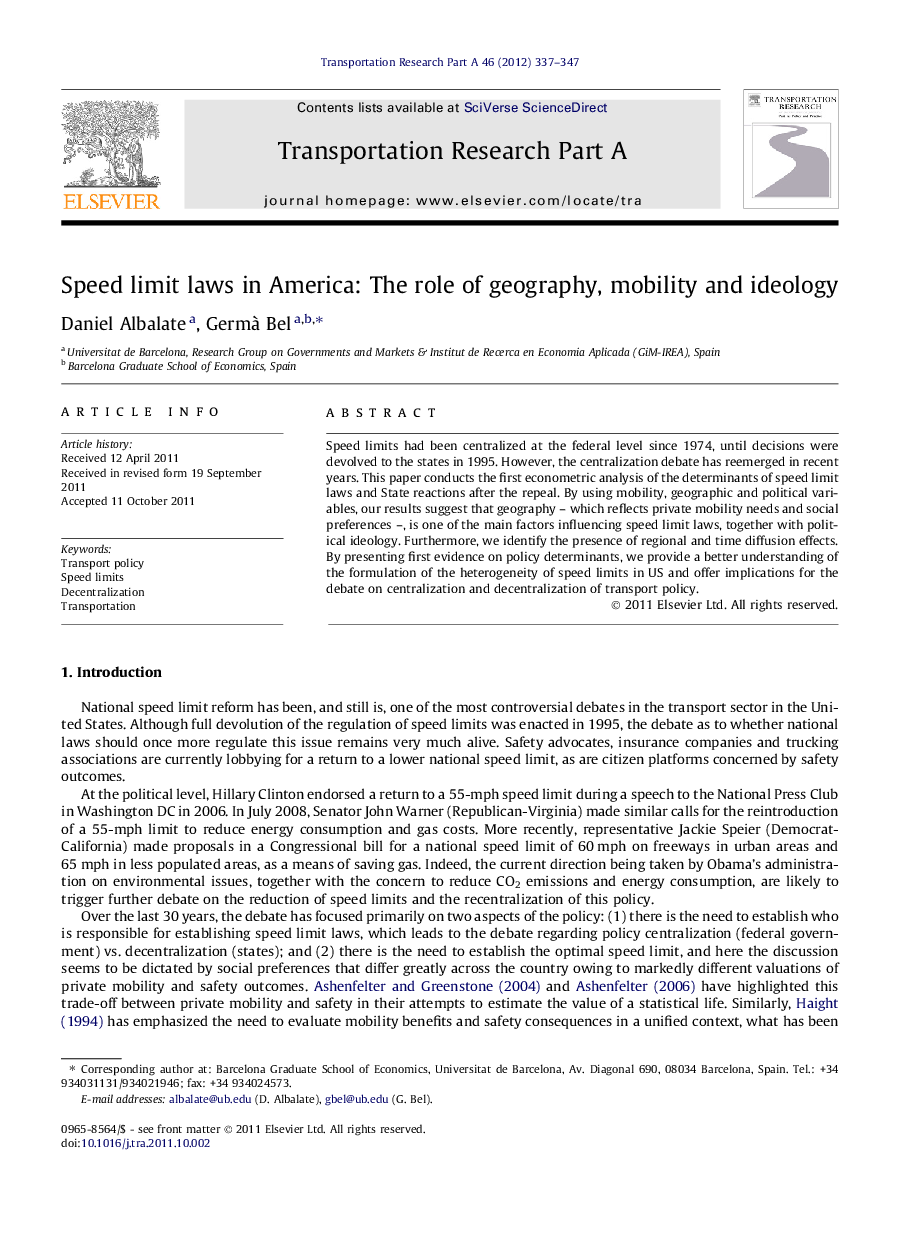| Article ID | Journal | Published Year | Pages | File Type |
|---|---|---|---|---|
| 312178 | Transportation Research Part A: Policy and Practice | 2012 | 11 Pages |
Speed limits had been centralized at the federal level since 1974, until decisions were devolved to the states in 1995. However, the centralization debate has reemerged in recent years. This paper conducts the first econometric analysis of the determinants of speed limit laws and State reactions after the repeal. By using mobility, geographic and political variables, our results suggest that geography – which reflects private mobility needs and social preferences –, is one of the main factors influencing speed limit laws, together with political ideology. Furthermore, we identify the presence of regional and time diffusion effects. By presenting first evidence on policy determinants, we provide a better understanding of the formulation of the heterogeneity of speed limits in US and offer implications for the debate on centralization and decentralization of transport policy.
► This article examines the determinants of speed limit laws in the United States. ► We conduct econometric analysis on the role of geography, mobility and ideology. ► Results show the importance of private mobility and ideology on State reactions. ► Also, regional and time diffusion effects are determinants of law heterogeneity. ► Our findings provide evidence and implications for the policy decentralization debate.
